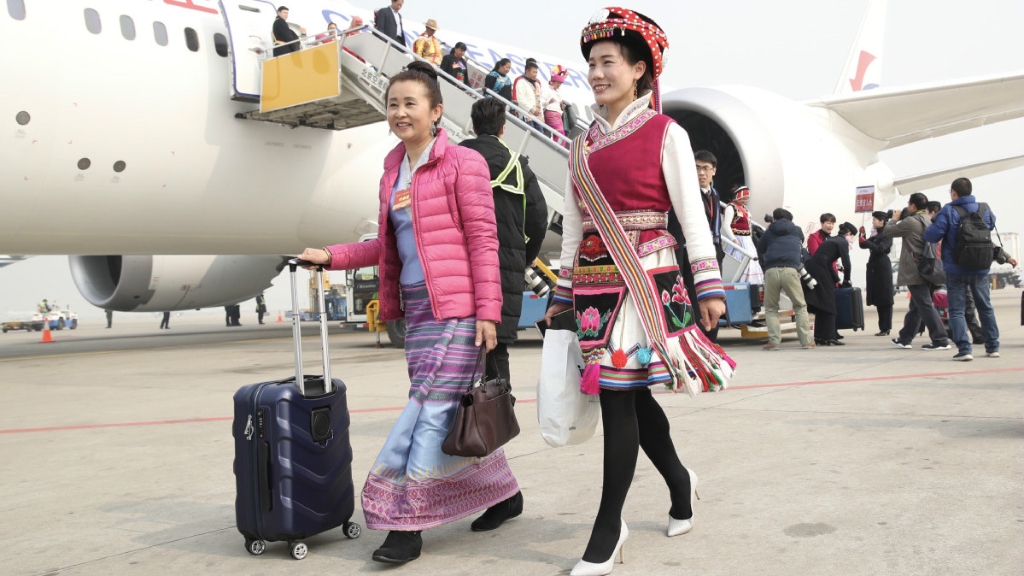A remote village in the Xinjiang Uygur autonomous region that shares the same latitude as Provence is following the French region's path to fame and prosperity through its fields of lavender.
Tourists have begun flocking to Sigong in northern Xinjiang in recent years, creating more than 1,000 jobs connected to the lavender business, local officials said.
The achievement is remarkable considering there are only about 2,000 people living in the county in Ili Kazak autonomous prefecture. Last year, tourists made more than 200,000 trips to the area, flocking to enjoy the beauty of the blooming lavender. Sigong and Provence share similar meteorological and soil conditions that are perfectly suited to growing the flower.
"I cannot say we have completely avoided the negative impact of the COVID-19 outbreak, but we did welcome more tourists in the past two years," said Li Zengjie, a village official.
Tourists such as Mao Zimin from Xi'an, Shaanxi province, are eager to have their photos taken in front of stretches of lavender.
"I had planned to spend the vacation with my mom in Provence before the pandemic, but as the confirmed cases of the virus grew in Europe, we canceled and visited Sigong instead," he said.
When Mao visited the village in May, about 96 percent of the arable land was growing lavender-an estimated area of more than 800 hectares.
The initial attitude of Wang Jianping, 36, was typical of farmers in Sigong who thought growing flowers was a fancy business with poor returns. Farmers also had to cope with poor returns from their established crops.
"No matter what we grew in the past, like corn, wheat or beets, the yields were only half those in neighboring villages," said Wang, who made more than 70,000 yuan ($10,840) by growing lavender last year.
In 2014, after conducting research on the lavender industry's viability, local authorities said plantations would not only produce lucrative oil but also attract tourists. At first, the villagers weren't easily convinced.
"Without a successful precedent, most of the villagers were reluctant to invest in things they had never tried before," Li said.
Idea takes root
In order to set an example, Li and other village officials planted lavender on their farms. Their first harvest increased their incomes, and more than 130 households decided to join the local lavender growing cooperative to sell their flowers to local processing factories.
In 2018, fueled by the soaring e-commerce industry in China, a complete industrial chain was established to cover lavender growing, processing and sales.
"During the summer harvest season we can deliver fresh lavender oil, which has been widely used in traditional Chinese medicine, to customers across the country within a week," Li said.
Ninety percent of the households in the village are now growing lavender on their farms, earning an average of 25,000 yuan a year.
"That was how we built trust among the villagers," Li said. "When we stepped forward to meet the demands of the increasing number of tourists who were looking for local accommodation, they followed."
Fields of dreams
Before 2019, visitors could not stay for lengthy periods in Sigong as it had no tourist accommodation.
"You cannot expect that we would build a hotel in our remote village, we simply did not have the budget to do that," Li said.
But rural officials in Xinjiang have had the opportunity to visit modern, prosperous villages in coastal and eastern provinces, where the tourism industry has become a major economic force, and learn from their successes.
"The first time I ever heard of a guesthouse was when I visited Zhejiang province in 2018, and the modern, homelike lodging was impressive," Li said.
In 2019, the village's decision to renovate old houses on farms near lavender fields and turn them into guesthouses was welcomed by residents. The plan also attracted talent and investors from outside.
Before tourists arrived in the village last summer, hundreds of construction workers started renovation projects. Young designers were also invited in by a number of investors.
Designer Zhang Yi from Hangzhou, Zhejiang, first went to Sigong in late 2019. She said the beautiful scenery and lavender fields drew her to the village.
"I had participated in several guesthouse designs in Zhejiang, but Xinjiang was virgin territory in the business, so when the people in Sigong invited me, I came without hesitation," Zhang said.
Zhang designed a Mediterranean-style guesthouse that deeply impressed owner Wang Haibo, 30, who once ran a small trading business in a nearby city.
"With a beautiful lavender field next to my guesthouse, the tourists who stay here feel as if they are somewhere in southern Europe," Wang said.
Like Wang, the villagers who have participated in the guesthouse operation are expected to receive dividends in due course. According to the local government, there are now 21 guesthouses in the village, and they have brought in 2 million yuan over the past year.
The officials said there will be more than 30 guesthouses by next year, and a variety of lavender spin-off products will soon be on the market.
"I am planning to open a coffee shop in the village this year as I would love to spend my summer time in Sigong," Zhang said. "I believe more tourists will be lured, not only by nature but also the services people can provide in Sigong."















.jpg)









.jpg)


